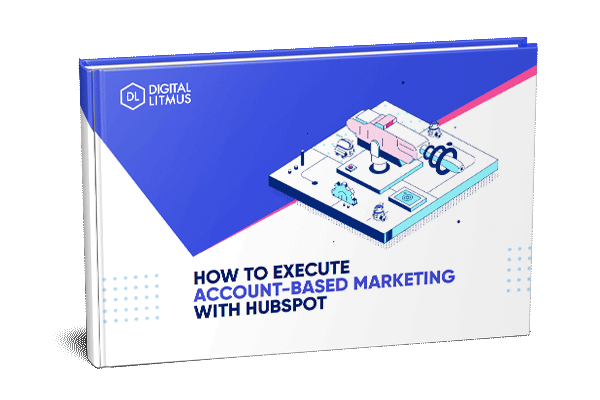A question we commonly encounter is whether conversion optimisation can be carried out on low-traffic websites.
And the answer is yes, of course it can! Conversion rate optimisation (CRO) is not only for high-traffic websites, it’s only certain aspects of CRO that require lots of traffic.
It’s not just about traffic volume
In fact, it’s not so much about overall traffic but more about conversions themselves. Conventional conversion wisdom says 100 conversions per variation is a good baseline for a low-traffic website.
So, if your site can generate those 100 conversions per variation in a reasonable timeframe, then you can split test. Before you get started testing, a good place to start is with a sample size calculator.
The Minimum Detectable Effect
One key aspect in determining the sample size needed for an experiment is the Minimum Detectable Effect - this is the minimum relative change in conversion rate that you would like to be able to detect.
With low-traffic websites it’s advisable to go for bigger changes that are going to have a bigger impact on the conversion rate - this will significantly reduce the sample size required for your experiment. Have a play with the sample size calculator to see the difference it can make.
Statistical significance isn’t set in stone
Best practice says that aiming for statistical significance of 95% is the level we should run our experiments at. But that can mean that experiments take too long to run and grind your testing programme to a halt.
If by accepting a confidence level of 85% means that you can actually run tests and make better informed decisions, this could be a trade-off worth making. You do run the risk of putting live an experiment that doesn’t generate the results you hoped for, but overall this approach could work for you.
Find your pages with the most traffic
Looking at overall site traffic doesn’t really give us the answer as to whether or not you can test effectively. Dig through your analytics and find the pages with the most traffic. These may well have enough traffic for you to effectively A/B test on.
Increase volume with micro-conversions
Not all conversions are created equal. Conversions at the bottom of the funnel (i.e. sales) don’t happen as often as conversions further up the funnel (e.g. buy now clicks). Split testing based on micro-conversions further up the funnel will have more volume and therefore make split testing possible.
Clearly there’s more to the picture further down the funnel, but micro-conversions can be a good starting place for conversion optimisation in a low-traffic site.
Heuristic analysis can go a long way
When there’s not a lot of traffic you need to alter how you carry out your conversion optimisation research. Heuristic analysis (using experience and best practice) is a great way to start the process.
Use a heuristic framework to guide you. There’s a number of different ones out there including the excellent LIFT model from WiderFunnel.
Think about the conversion goal you’re looking to improve and then map out the conversion flow. Walk through your product as if you’re the user and identify any bottlenecks or opportunities to reduce friction.
All sites and audiences are different, and this isn’t normally recommended, however in a low-traffic situation a good method to find inspiration for improvements is to look for similar sites.
Sites that have similar user experiences, goals, and audiences who have had the budget for testing have probably had some good results. Use their sites as inspiration for your own tests.
User testing is easier than you think
Tools like Hotjar and Usertesting.com allow you to observe real users using your product. You don’t need to watch dozens of videos to find valuable insight.
By watching user testing videos you can see where users are struggling. Combined with your heuristic analysis you’ll identify great opportunities for testing.
Don't settle for a cookie-cutter approach to B2B marketing. Let's develop a data-driven strategy that differentiates your brand and delivers results. Ready to embark on a journey towards business growth and success? Start by exploring our strategy services and how they can help you thrive.
Eye-tracking for the masses
Eye-tracking reviews of a website can often reveal how users are perceiving your website. But this is often time-consuming and very expensive.
But the future is here - there are now algorithmic eye-tracking tools. They’re not quite perfect but they’re good enough to get you started.
They can predict (with pretty good accuracy) how a user would perceive your page. Check out Feng-GUI, EyeQuant, and LookTracker to see if they can work for you.
Talk directly to your customers
Why aren’t your customers buying? Why do they abandon their shopping carts? You can make assumptions, or you could just talk to them!
You can meet your customers, call them, or use site surveys and polls to get direct feedback. If you’re not doing this regularly, start now - it’ll generate a lot of insight that you can put straight to work in your conversion optimisation.
Big changes = big results
When you’re trying to optimise a low-traffic website, think BIG. Don’t tweak button colours or a word here or there.
Pull together a number of hypotheses based on your conversion research, implement them and roll them all out at once.
This should produce effects that are big enough to be seen and will hopefully make a significant difference to your business.
It doesn’t have to be totally scientific
If your traffic and conversion volumes are too low for split testing, you can take a slightly unscientific approach.
You can make some big changes, wait a month, watch the KPI’s, and see what happens. Make another set of changes, wait another month, and then see what happens, and so on.
This isn’t normally recommended as there is a lack of statistical significance to the results, but it can still work and it’s far better process than most companies out there are using.
So there’s no excuses, get out there and start optimising!

Could we be your next strategic marketing partner?
Our marketing strategy services - We are a B2B marketing agency with a dedicated team of experienced 'CMO-level' strategy experts specialising in strategic roadmaps, persona development and customer journey mapping, along with content and SEO strategy. Find out more about our marketing strategy services.
Enjoy this article? We produce blogs like this for our clients as part of our content marketing agency services, and could produce engaging content for you too.






